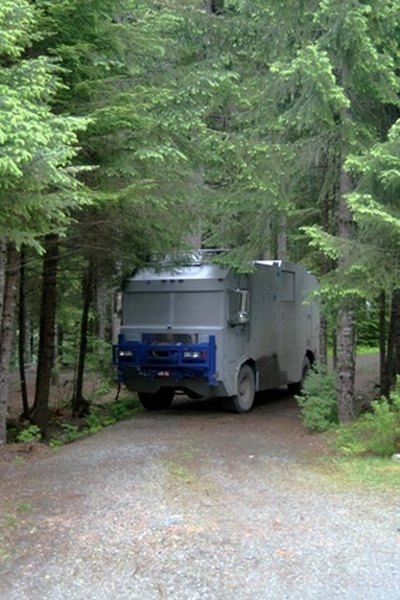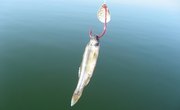
Once you become an RV enthusiast, one of the most common topics of discussions you'll have with fellow campers will be the efficiency of your holding tanks and their sensor readings. Most RVers have some kind of story about overflowing tanks, objects that fall down the drain and must be retrieved, and clogged sewer valves that result in hundreds of dollars in repairs. Avoid experiencing your own holding tank war story by keeping waste that you put down the drain to a minimum and always using single-ply toilet tissue when RVing.
Items you will need
Earth-friendly holding tank chemicals
Water softener
Powdered laundry detergent
Hot water
Bucket
Single-ply toilet tissue
Earth-Friendly Methods Give Great Results
Avoid clogged sewer valves and sludge build-up in your RV tanks by using the proper RV holding tank chemicals. Whenever you put black or gray waste down the drain into your RV's holding tank, tank chemicals provide beneficial bacteria that helps to neutralize odors and break down solid matter. To find the best tank chemicals that will aid in this process, choose tank products that include earth-friendly enzymes which add oxygen and nitrates that assist in reducing odors. Avoid any RV holding tank chemicals that include formaldehyde or its derivatives, as these compounds will destroy beneficial bacteria.
Check your RV tank sensors regularly to ensure that build up is being eliminated during dumping. Be aware that even with the most meticulous use of proper holding tank chemicals, your RV's tank sensors will often give false readings about the capacity of your tanks. Many sensors will show a partially-full tank even if you have just dumped the gray and black water. Test your sensors by turning them on immediately after dumping. If they show that your thanks have waste in them, it's time to use more aggressive methods of removing tank sludge.
Pour hot water into your holding tanks to break down toilet paper and food matter. Water should go directly into the commode and also down the sinks and bathtub or shower. You may need to repeat this several times before your tank sensors give an accurate reading.
Try the Geo Method. This earth-friendly holding tank cleaning process is a homemade recipe you can make yourself with products found at any grocery store. The Geo Method consists of 2 cups of water softener and 1 cup of powdered laundry detergent dissolved in boiling water. The water softener will help to dissolve solids that cling to the sides. Proponents of the Geo Method believe that the more you use this homemade recipe in your holding tanks, the slicker the walls of your tanks will be from the water softener. As a result, whenever you empty your tanks, all solids will rinse away. For best results, pour this solution into your tanks and take your RV for a short ride before dumping the tanks.
Dump your holding tanks only when they are almost full. Doing so will allow water to slosh around in the tanks and help remove deposits stuck onto the tank's sides. When you are at the dump station, hook up a garden hose to an outside water faucet and bring the end of the hose inside the bathroom to spray down the tanks directly from the commode bowl.
Warnings
- Always dump your RV sludge into an approved sewer system. Never deposit your RV waste on the ground.
Tips
- Always keep your RV tank valves closed when hooked up to a community sewer system. Methane may expand inside the sewer system, and potentially cause an explosion while your RV is hooked up to it.
References
Tips
- Always keep your RV tank valves closed when hooked up to a community sewer system. Methane may expand inside the sewer system, and potentially cause an explosion while your RV is hooked up to it.
Warnings
- Always dump your RV sludge into an approved sewer system. Never deposit your RV waste on the ground.
Writer Bio
Rene Agredano is a traveling journalist and entrepreneur based in Fort Collins, Colo. Since 1998, she has covered travel, home-and-garden, fitness, animal care and other lifestyle topics for publications such as "The Times-Standard" newspaper of northern California. Agredano holds a Bachelor of Arts in English from Chapman University.



